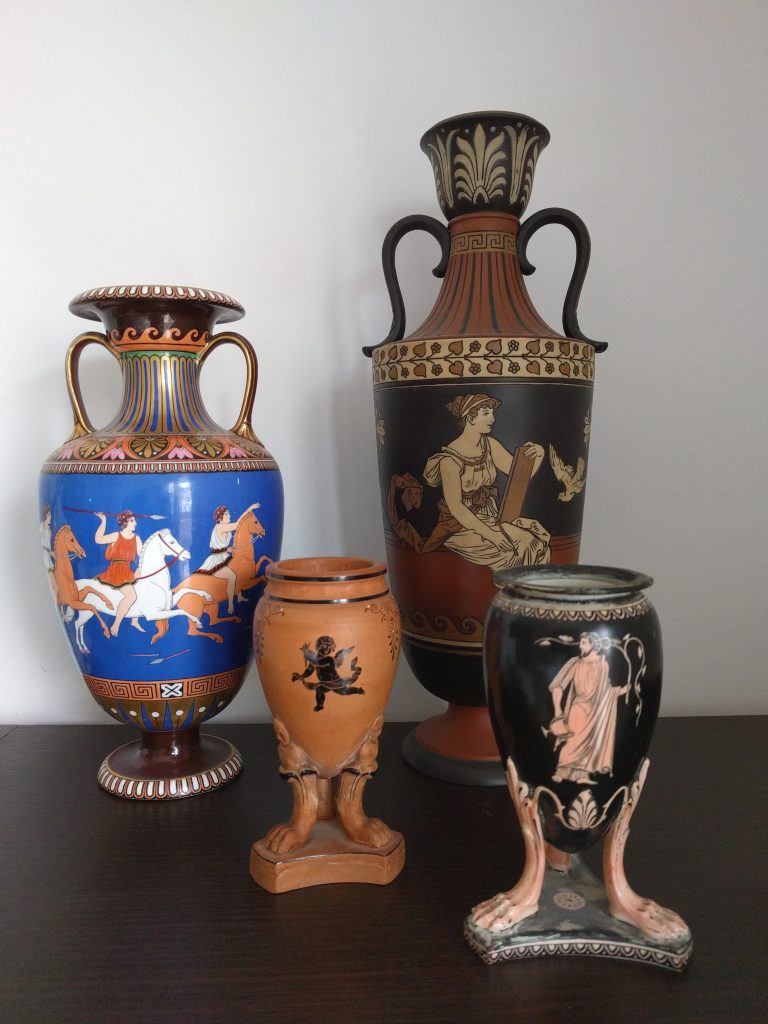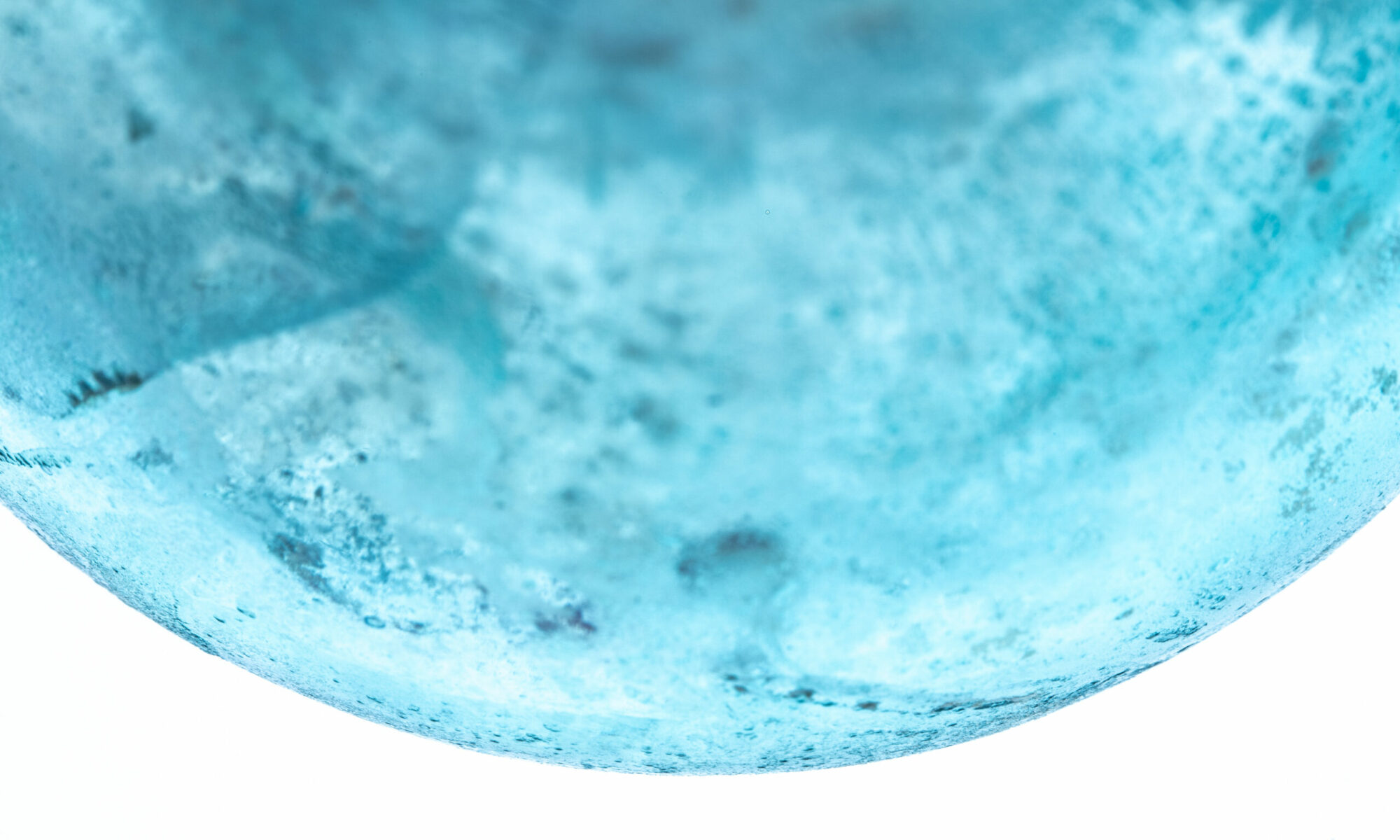
Conference July 16-17, 2021
The conference will be held online via Zoom. Please register in advance by sending an email to corinna.reinhardt@fau.de
program and abstracts here
Program
(all time in the program UTC+2)
Friday, July 16
14:00–14:30 Corinna Reinhardt: Introduction – The Grecian Vase: 1840–1900
14:30–15:15 Hildegard Wiegel, ‚Greek‘ Vases in the Royal Collection. A diplomatic gift and its afterlife
Panel 1: Spectrum and diversity of productions à la grecque
Chair: Andreas Grüner
15:15–16:00 Caterina Maderna, Napoleon und die Folgen: Triumphierende Antike im Porzellan
Coffee break
16:30–17:15 Nancy Ramage, After the Antique: The Giustiniani Pottery and its Roots in ancient South Italy
17:15–18:00 Anja Klöckner, Neapolitaner Keramikwerkstätten und die vielschichtige Rezeption griechischer Vasen im 19. Jahrhundert
18:00–18:45 Janett Morgan, Designs on the Past: Dillwyn’s Etruscan Ware and the art of social transformation
Saturday, July 17
Chair: Georg Gerleigner
14:00–14:30 Norbert Franken, Kopien antiker Vasen aus der Tonwarenfabrik Bernhard Bertram in Lüftelberg bei Bonn
14:30–15:15 Katharina Hefele, Jannis Rütten, Corinna Reinhardt: A new image of the Greek Vase? Eclecticism in using models for vase production by the factory of August Sältzer at Eisenach/Thuringia
Panel 2: The reception of Greek vases in other artistic media
15:15–16:00 Andreas Grüner, Schwarz / Orange
Coffee break
Chair: Arne Reinhardt
16:30–17:15 Paolo Persano, Images of Greek Vases in 19th Century Tuscany
17:15–18:00 Kilian Kohn, A deviation à la grecque – John William Waterhouses Ulysses and the Sirens (1891) in the context of 19th century reception of Greek vases in Britain.
18:00–18:45 Bénédicte Garnier, The reception of Greek vases by Rodin in his sculpture factory, an example of «Greek-style production»
Short break
19:00–19:30 Corinna Reinhardt, Concluding remarks
Abstract:
In the second half of the eighteen century, collecting Greek vases gradually became a more widespread phenomenon. Many of them were found in the newly excavated graves in Campania and (later) Etruria and attracted much attention. The appreciation of Greek vases resulted in a new taste and fashion – first known under the terms Etruscan taste, à l’etrusque, all’etrusca or hetrurisch, before most of these vessels began to be widely recognised as Greek products and the fashion was then termed Greek revival or neogrec/neoclassical. This fashion concerned nearly every part of everyday life, especially the contemporary ceramic production. In 1769, Josiah Wedgwood started imitating ancient vases in his factory called ‘Etruria’ and coined the motto ‘Artes Etruriae renascuntur’ for his famous stoneware ceramics. In 1787, the Servizio Etrusco of Naples’ Real Fabbrica Porzellana di Ferdinandea was presented as a gift to George III of Great Britain and Ireland and at the same time, Sèvres manufactured an Etruscan service for Marie Antoinette’s country house Rambouillet. Other production sites quickly followed, and at the end of the 18th century, various, even small factories produced ceramics in ‘Etruscan’ taste. These 18th-century neoclassical reproductions of ancient pottery are well-known, and a lot of publications and exhibitions have addressed them.
However, the aesthetic paradigm of the design and paintings of Greek vases did not find an end with the beginning of the 19th century. On the contrary, Greek vases remained prestigious artefacts in 19th-century Europe (no matter if they were originals, nearly identical copies or new creations in the same style). Until now, this period of reception has found only little attention. Publications are available only for some factories (such as Hjorth and Ipsen [Enke] in Denmark)[1] but there has been a rise in interest as indicated by recent research which focuses on English ceramic production using ancient models in relation to its social context.[2]
From an European perspective, a considerable number of questions have remained open so far: what kind of pictures come out of individual European countries, is it possible to discern specific developments, and how and to what extent were the agents of this craft interrelated with one another? What were the reception mechanisms of Greek vases and their imagery during the 19th century – and in what sense do they relate to – or differ from – those in the initial period in the late 18th and early 19th century? What was the relationship between the development of artistic production and the desire to imitate the appearance of ancient pottery?
Albeit almost unknown today, a wide range of different factories and productions existed in the middle and second half of the 19th century which imitated Greek vases in different techniques and colours. A good example is the factory of August Sältzer at Eisenach/Thuringia (founded in 1858). Sältzer began as stove producer before he focused on imitating Greek vases as well as other historical styles in the mid-sixties (his company was to last until the beginning of the 20th century). The production range of this factory, the technical development, the ancient models and reproduction media used for these ceramics stand at the core of a current research project conducted by Corinna Reinhardt, the initiator of this conference which seeks to discuss the reception of Greek vases in Europe, ca. 1840–1900, within an interdisciplinary environment.
The aim of the conference is, on the one hand, to provide an overview over the heterogeneous factories especially in Austria, Denmark, Britain, France, Germany, and Italy which produced ceramics after the design and paintings of Greek vases in the period between ca. 1840 and 1900. Here, the main objective is to bring together research which is often separated by disciplinary boundaries, different subjects as well as different European countries, in order to provide for the first time a pan-European view on the reception of Greek vases in this period. On the other hand, the contrast and comparison between different productions is supposed to bring to light different aspects of this reception, and will help to understand the various phenomena within specific contexts and constellations.
[1] P. Birk Hansen (ed.), Kähler, Ipsen, Hjorth. Fra pottemageri til fabrik. De tidlige år ved tre danske keramikværksteder. Herman Kählers værk i Næstved fra 1839, Peter Ipsens terracottafabrik i København fra 1843, Lauritz Hjorths terracottafabrik i Rønne fra 1859 (Næstved 2005).
[2] E. Hall/H. Stead, A People’s History of Classics. Class and Greco-Roman Antiquity in Britain and Ireland 1689 to 1939 (London 2020); A. Petsalis-Diomidis / E. Hall (edd.), The Classical Vase Transformed. Consumption, Reproduction, and Class in Eighteenth- and Nineteenth-century Britain, Bulletin of the Institute of Classical Studies 63 (Oxford 2020).
